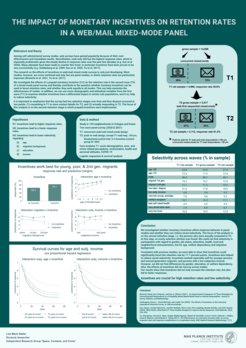
Crime, Insecurities, and Social Dynamics in Urban Neighborhoods
The major goal of this study is to advance the understanding of structural conditions and social processes in relation to crime problems in urban neighborhoods in a longitudinal perspective. Residents’ subjective perceptions of disorder and crime as well as collective social capital are key mechanisms in the complex social processes shaping the development of neighborhoods. This project constitutes phase 2 of a long-term study of 139 neighborhoods in Cologne and Essen, two large cities in North Rhine-Westphalia with high levels of ethnic diversity.
| Project language: | German |
| Photo: | © iStock.com/chinaface |
Research Focus
The study focusses on the development of social cohesion, trust, and insecurity perceptions in urban neighbourhoods during recent years of rapid sociodemographic change. Insecurity perceptions related to crime and disorder are not only relevant for the wellbeing of individual residents but may impede the social cohesion of neighbourhoods.
Recently, a lot of research has focused on the consequences of increasing ethnic heterogeneity on social cohesion in Western societies. Most studies, however, have looked at these associations cross-sectionally, and longitudinal studies on the social dynamics of neighbourhoods are rare.
The migration crisis of 2015/16 and the spatially concentrated increase of ethnic diversity in some urban neighborhoods can be used to relate these developments to changes in social cohesion and insecurity perceptions, thus getting closer to causal effects. In addition, the panel design with two survey waves twelve months apart can be exploited to investigate the effects of victimization on fear of crime and well-being over time of individual respondents.
As the current survey waves inadvertently took place during the COVID-19 pandemic, questions about the experiences and strains during the lockdowns and the role of neighborhood support were added to the questionnaire.
Project Description
After two survey waves in 2014 and 2015 (see earlier project SENSIKO), the second phase of the survey started in autumn 2020 in the same 139 neighbourhoods using a fresh random sample of residents who were asked to participate again after twelve months, in autumn 2021. For maximum comparability of the two phases of the project, most parts of the questionnaire were kept identical. However, we changed the survey mode from postal survey only to mixed postal/web survey. The special focus on old age respondents was dropped in the second phase.

The net sample of wave 1 (2020) is roughly 5.000 (response rate 35.6 %, 3.600 postal mode, 1.400 web mode). Wave 2 was collected between October 2021 and January 2022 and yielded a net sample of 3.100 respondents (1.600 postal mode, 1.500 web mode). We used a push-to-web approach in wave 2 and included a unconditional monetary incentive which proved highly effective: compared to a control group, the incentive raised the response rate by almost 18 percentage points (see graph and pdf file for more information).
Ongoing and future analyses focus on changes in social cohesion, insecurity perceptions and victimization between 2014 and 2020 in relation to neighborhood changes in socio-demographic structure and recorded crime rates, as well as on the individual consequences of victimization experiences and the issue of effect heterogeneity.

